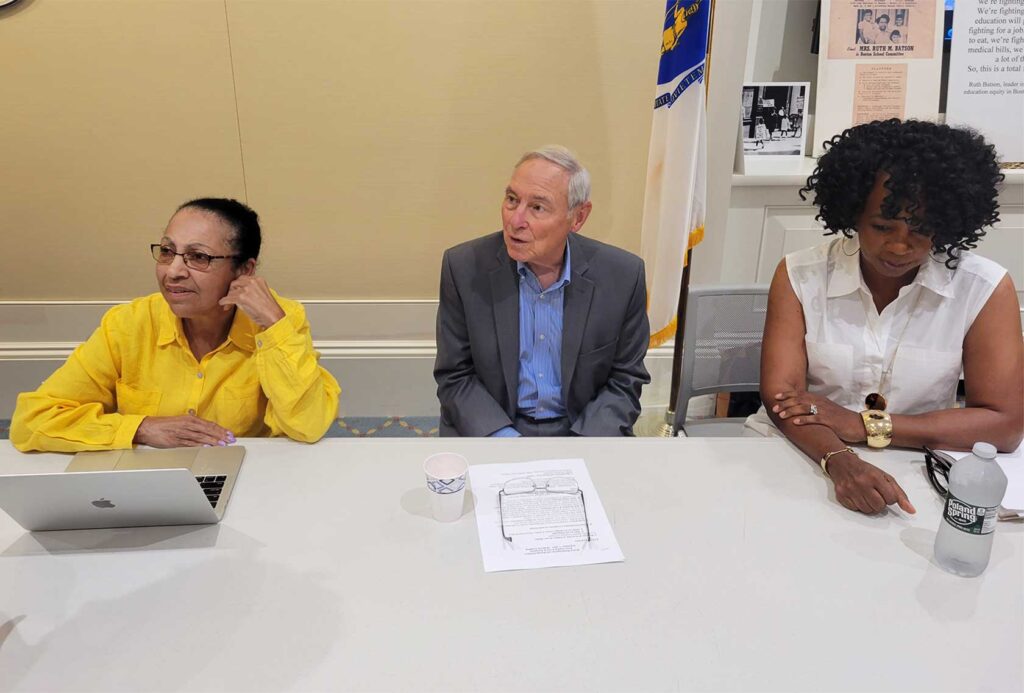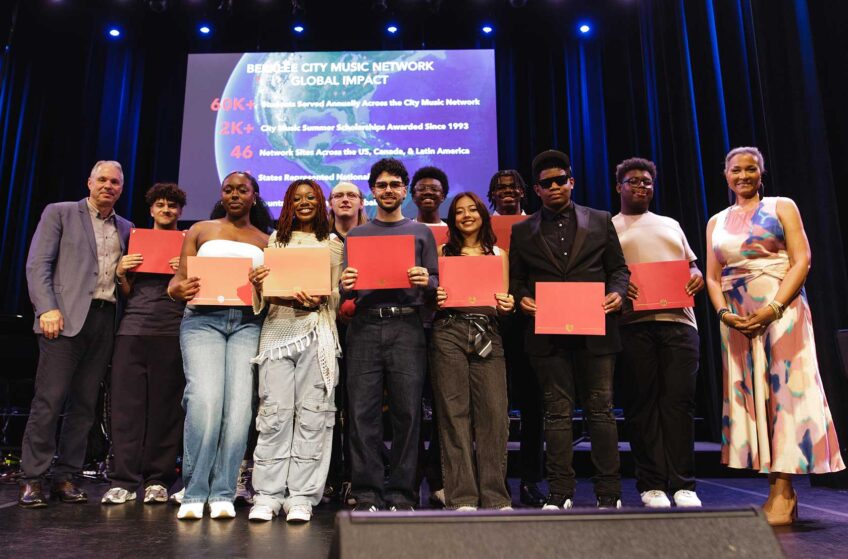Scholar, activist look back at BPS desegregation
Series of forums planned on impact of 1974 court order

MIT Professor Karilyn Crockett was just born the year before federal Judge W. Arthur Garrity ordered the Boston Public Schools to desegregate, but noted her grandmother joined the lawsuit because she felt even the separate but unequal schools back in West Virginia served Black students better.
Lew Finfer, director of Massachusetts Action for Justice, was a 23-year-old community organizer with the integrated Dorchester Community Action Council in 1974, when Garrity issued his order. He recalled white teenagers throwing rocks that August at him and Black demonstrators on Carson Beach in South Boston, “kind of like what I saw on TV in the South, but I’m standing here in Boston.”
To mark the 50th anniversary of school desegregation, the Black Gen X professor and the white Boomer community organizer have joined together to organize more than a year of forums looking back at what critics say the media often mislabel as the city’s “busing crisis,” which, whatever it is called, remains a source of enduring trauma.
“So many carry trauma from those years, people of all races,” Finfer said at a news conference announcing the initiative on Sept. 7, the first day of school in Boston.
“This initiative is really about giving us a chance to think not just about the history — what happened — but lessons learned and what to do next,” Crockett explained.
In what appears to be a compromise, the effort is named the Boston Desegregation and Busing Initiative, which involves a working group, including many members who were teachers, students or community leaders during that period.
Not all agree the core issue that inspired violence was equal educational opportunity, rather than the mode of transporting students. The disagreement is a sign that after a half century, the city lacks a consensus on why opposition to school desegregation exploded into more violence than anywhere else in the North.
Eric Van Loon, a lawyer with the Center for Law and Education, represented named plaintiffs Tallulah Morgan, Mary Crockett and others in the 1973 trial. He said at the news conference about 30,000 Boston students took public transportation to Boston schools in 1972-1973.
“There were instances where school buses took white kids past nearby Black schools that had space to go to another white school. There were instances of Black kids being bused past schools that had space to go to another Black school,” Van Loon said.
“The idea of ‘neighborhood schools,’ pre-desegregation, is, in some very significant measure, a myth,” he added. “That’s not to say there weren’t, of course, some neighborhoods where the elementary kids would just walk, but the idea that Judge Garrity’s orders somehow brought busing that never happened before is wrong by about 30,000 students.”
In his 2016 book, “Why Busing Failed,” Matthew F. Delmont, now a history professor at Dartmouth College, reported that before desegregation half of middle-school students and 85% of high-school ones rode a bus to a Boston school.
Bob Monahan, as a 20-year-old in South Boston, protested the implementation of Garrity’s order — nonviolently. Decades later, after the murder of George Floyd, he helped organize a series of “Courageous Conversations” hosted by the South Boston Association of Non-profits about what he still calls “busing.”
For a neighborhood that was a center of hostile opposition to Garrity’s order, just talking about the issue was a breakthrough.
“We were not allowed to for a lot of reasons in South Boston. You were taught — there was an understanding — you did not talk about busing (because) nothing good is going to come about this,” Monahan said.
A working group member, he spoke at the news conference, where he respectfully disagreed with Van Loon’s conclusion.
“I appreciate the stuff all about — in Southie, I’m sorry, it was about busing,” Monahan said.
Other speakers at the news conference, also working group members, were Ira Jackson, then chief of staff to Mayor Kevin White; Lyda Peters, who worked with education advocate Ruth Batson; Leola Hampton, who was bused to South Boston High School in 1974; and Milly Arbaje-Thomas, current president and CEO of METCO.
The Desegregation and Busing Initiative held its first informal public session on Sept. 11, a watch party in Dorchester of the new PBS documentary about Boston, “The Busing Battleground.”
The first forum is scheduled Sept. 26 at Roxbury Community College on “community organizing and legal efforts” from 1960 to 1973 “to try to eliminate segregation and to secure educational justice for Black students,” leading up to the federal court case.
Another forum is planned in June at the federal courthouse, marking the 50th anniversary of Garrity’s decision, to discuss legal issues surrounding Morgan vs. Hennigan. Two next fall at the main Boston Public Library in Copley Square will focus on what happened in 1974-1978 and desegregation’s legacy. Another around that time will consider Boston suburbs and desegregation, including the METCO program.






